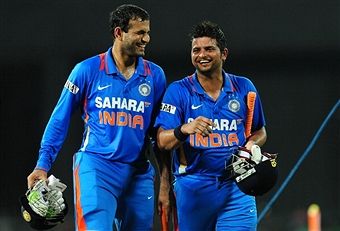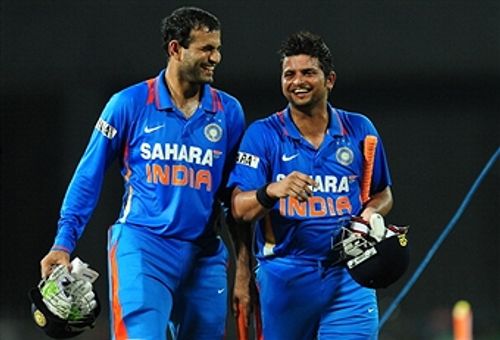
Indian Cricket: Chasing dreams

If one has been an Indian cricket fan through the years, there is one thing that stands out most; a quality that readily manifests itself as something that is most definitely post-modern, in a sense. Sure, we had the Big 4 and the innumerable others. This bunch of current cricketers, however, seem to have something different – a sense of conviction.
Over the years, and indeed decades, India have always been seen as a bat first team in One Day Internationals. The bowling has pretty much always played second fiddle and a big enough score meant greater confidence and more chances of a win. The current crop, however, seem to be defying what is thought to be conventional wisdom. They seem to almost dare the opposition to get as many as they can get, all the while knowing that they can get at least one more.
In one word, the approach to chasing seems to be fearlessness. A cavalier attitude has replaced one of dread and that has much to do with the way that they current crop has been brought up to approach the limited over game. The one defining factor to this attitude, as much as the purists will hate to hear it, is the advent of the T-20 game.
Reams have been written on the demerits of the shortest version of the game; how it has led to the loss of technique, how it has effectively killed the careers of many a cricketer, well the longevity at least; how it has led to the advent of the instant gratification that has many a kid aspiring to play for an IPL team and earn a lot of money rather than dreaming of donning the cricketing whites. Most of this, and perhaps all of it is true.
However, credit must be given where it is due. The shortest version of the game has brought about this sense of balance in the approach to the slightly longer form of the game. Batsmen tend to pace their innings a whole lot better. Of course, people will argue that batsmen get too impatient and get out playing a needless shot but well, that is an individual error and not the fault of a version of the game.
The latest game that India and Sri Lanka played is a perfect example of how India construct a run chase. Sehwag, as commentators take pains to point out, played his natural game, viz, stupid shots, and got out. Gambhir paced his innings beautifully and knew that he had to anchor the chase. He did so. Virat Kohli and the skipper played their parts and got out. The point of the game that really epitomized the chase was when Rohit Sharma got out and in walked Irfan Pathan.
An Indian team of old would have wilted. Not this one. There were streaky shots, no doubt. The rub of the green, as they say, went in favor of the men in blue but there was this sense of calm about the two men in the middle. At one stage, the required run rate touched nine an over, almost. There still seemed to be a quiet confidence – a confidence in their own ability and a sense that playing sensibly would bring them home.
Accordingly, the two of them did, and they eventually emerged victorious. There was one moment of utter idiocy with India needing three to win off four balls and Pathan went for a wild swing. Raina immediately sprinted up to him and knocked some sense into him. A mere lapse, it turned out to be. The next ball was duly dispatched to the boundary on the on side and India coasted home.
The point is that perhaps the shortest form of the game is a bane and perhaps it will lead to the ultimate demise of the game. The pessimists think that way, anyway. For the present though, it has made India a better chasing side. Of that, there can be no doubt.